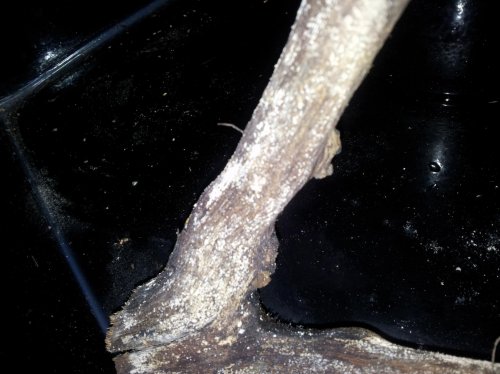Navigation
Install the app
How to install the app on iOS
Follow along with the video below to see how to install our site as a web app on your home screen.
Note: This feature may not be available in some browsers.
More options
You are using an out of date browser. It may not display this or other websites correctly.
You should upgrade or use an alternative browser.
You should upgrade or use an alternative browser.
Mould!
- Thread starter Allie30
- Start date
Solid Snake
Avid Member
What exactly did it look like? Mold can be very bad. Unless there was a ton of it everywhere you are most likely ok. Regular cleanings and letting the cage dry out in between mistings can help with mold.
Allie30
New Member
I've got some pet store treated branches in there and its on a length of it at the bottom. I think the problem is that its not drying out because its under all the foliage not getting direct heat.
I will get on it first thing in the morning but could there be damage already done? What should I look out for? Wilfred is showing no signs of ill health but Im a little worried now
I will get on it first thing in the morning but could there be damage already done? What should I look out for? Wilfred is showing no signs of ill health but Im a little worried now
chameleongirl2
New Member
Noticed mould today when I was having a clean out! I am going to have to re think some things over the weekend but i just wanted to know how bad it is for the cham's?
it depends.. what did it look like?
ChameleonFan1989
New Member
Are you using a mesh cage or a tall wooden vivarium? I've had wooden vivariums for different reptiles and really bad for creating mould or even rotting.
Solid Snake
Avid Member
I get that on dead wood in my jacksons cage sometimes. It usually happens to the stuff that sits on the bottom, and doesnt get a chance to dry properly. Im not 100% sure what kind of mold/fungus it is, I just toss it if I see it starting.
RPCV
Avid Member
There is no answer for how bad mold is for chams. There are over 200,000 species of mold; a very small percentage of these have been studied for health affects in humans let alone chams. The primary risk in humans is immune response mediated (allergy/asthma) or, more rarely, pathogenic outcomes (infections). Other health effects are related to mold by-products which are debated. This is for humans, and humans are not reptiles.
My guess is that a little bit of mold will not be a problem. Mold is abundant in nature and a cham's exposure in its natural environment would be orders of magnitude higher than in a screen enclosure with a bit of rotting material. However, we don't know if the types of mold growing in an enclosure would be the same as those encountered naturally. Regardless, mold is not desirable and should be taken care of.
The solution is to simply get rid of the moldy wood (chuck it outside) - then prevent mold from growing in the future. Mold will grow whenever there is a carbon food source (wood, paper, cotton, dust, etc) and sufficient moisture. As a general rule of thumb mold can start growing in dead wood once it has been continuously wet for more than 48 hours. Don't let the bottom of the wood to sit in moisture. If possible elevate it slightly off the bottom cage to allow for moisture to drip off and promote drying.
My guess is that a little bit of mold will not be a problem. Mold is abundant in nature and a cham's exposure in its natural environment would be orders of magnitude higher than in a screen enclosure with a bit of rotting material. However, we don't know if the types of mold growing in an enclosure would be the same as those encountered naturally. Regardless, mold is not desirable and should be taken care of.
The solution is to simply get rid of the moldy wood (chuck it outside) - then prevent mold from growing in the future. Mold will grow whenever there is a carbon food source (wood, paper, cotton, dust, etc) and sufficient moisture. As a general rule of thumb mold can start growing in dead wood once it has been continuously wet for more than 48 hours. Don't let the bottom of the wood to sit in moisture. If possible elevate it slightly off the bottom cage to allow for moisture to drip off and promote drying.
Similar threads
- Replies
- 26
- Views
- 1K

